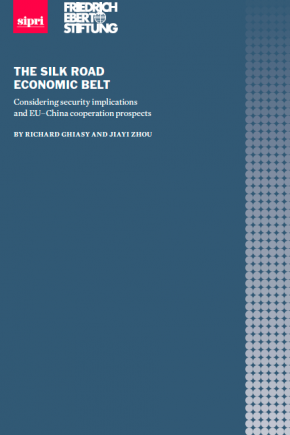The Silk Road Economic Belt: Considering Security Implications and EU–China Cooperation Prospects
The Silk Road Economic Belt (the ‘Belt’) component of the Belt and Road Initiative proposed by China in 2013 is an ambitious vision that has evoked enthusiasm among many stakeholders. Among other objectives, the Belt intends to promote infrastructural development and connectivity, and stimulate economic integration across the Eurasian continent. Europe is an integral part of China’s transcontinental vision, and the European Union (EU) has its own vested interests in the Belt—as the EU–China Connectivity Platform demonstrates. Beyond direct economic engagement, the Belt could also function as an entry point for deeper cooperation between the EU and China on a range of issues related to global and regional governance.
This one-year desk and field study has examined the Belt from a security perspective. The report has three components: (a) it has analysed what the Belt essentially is, what has driven China to initiate it, and how it relates to China’s own security interests; (b) it assesses what the Belt’s security implications are and might be in two selected regions of the Eurasian continent (in this report ‘Eurasia’ refers to the combined landmass of Europe and Asia), namely Central and South Asia; and (c) based on the sum of these findings, this study elaborates on whether the Belt is a platform for European Union (EU)–China cooperation on mitigating security threats throughout Eurasia, and provides policy recommendations to the EU on how to proceed. In the context of the report, ‘security’ is defined broadly in relation to intra- and interstate stability: it encompasses human security and developmental conditions.
The report and summary were updated on 22 February 2017.
1. The Silk Road Economic Belt dissected
1.1. Defining the scope and aims
1.2. Exploring China’s motivations
1.3. Relation to China’s evolving security concepts
1.4. Conclusions
2. The Silk Road Economic Belt: interaction with regional security dynamics
2.1. Interaction with security dynamics in Central Asia
2.2. Interaction with security dynamics in South Asia
2.3. Compatibility with Russian security interests
2.4. Conclusions
3. The Silk Road Economic Belt: an opportunity for European Union–China cooperation?
3.1. Compatibility with European Union security interests
3.2. Ways forward for the European Union
Annex I. United Nations Sustainable Development Goals (SDGs)
Annex II. Abbreviations


